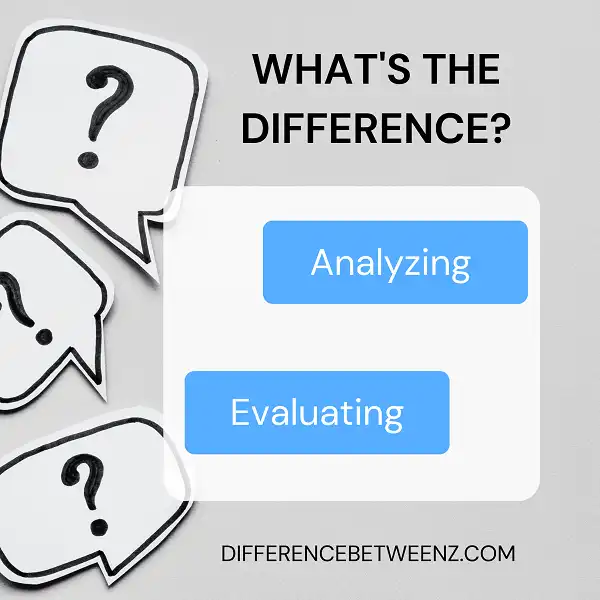As a writer, you analyze data to understand its implications for your work. As a reader, you evaluate data to determine whether it’s credible. What’s the difference? Evaluation is tougher—it means not just understanding numbers and their context but also making judgments about quality and usefulness. This might include figuring out how reliable the study or source is, determining if there are any biases at play, or assessing how applicable the information is to your own situation. In other words, evaluation goes beyond simply understanding what the data mean; it also involves applying that knowledge in practical ways. So next time someone asks whether you can “read between the lines,” remember that this skill doesn’t just apply to writing —it applies to all kinds of analysis.
What is Analyzing?
- Analyzing can be defined in a number of ways. In general, it refers to the process of breaking down something into its component parts in order to better understand it. This can be done for a variety of purposes, such as understanding how a machine works or determining the cause of a problem.
- When analyzing something, it is important to be as objective as possible and to look at all of the evidence before drawing any conclusions. In some cases, analysts may use specialized tools or techniques, such as statistical analysis or microscopy.
- However, in many cases, simply using one’s own observation and reasoning skills is sufficient. Analyzing is an important skill that can be applied to many different situations in life. By taking the time to analyze a situation, one can often find a more efficient or effective way of dealing with it.
What is Evaluating?
- Evaluating is the process of making judgments about the value or quality of something. When we evaluate something, we are offering our opinion about it.
- We may evaluate something based on our personal experiences or opinions, or we may use more objective criteria, such as facts or data. In many cases, evaluations involve making comparisons between two or more things.
- For example, we might compare the cost, quality, or features of two different products before deciding which one to buy. Evaluations can be helpful in making decisions, but it is important to remember that they are only one person’s opinion. We should always consider multiple evaluations before coming to a conclusion.
Difference between Analyzing and Evaluating
Analyzing and evaluating are two processes that are often used interchangeably, but there are some important distinctions between the two. Analyzing generally refers to the process of breaking something down into its component parts in order to better understand it.
- This can be done with something as complex as a legal document or as simple as a piece of fruit. When you analyze something, you are trying to understand its underlying structure and how it works.
- Evaluating, on the other hand, is the process of making a judgment about something. This can involve assessing the quality of something, determining its value, or comparing it to other similar things.
- In order to properly evaluate something, you need to have a clear understanding of what you are measuring it against. As you can see, analyzing and evaluating are two distinct processes that can be used to better understand the world around us.
Conclusion
In order to be effective critical thinkers, we must first understand the difference between analyzing and evaluating. Analyzing is breaking something down into its component parts in order to understand it better. Evaluating means making a judgement about something based on a set of criteria. We need to be analytical thinkers in order to figure out what is important about the information we are given, and evaluative thinkers in order to make informed decisions. By understanding these two concepts, we can become more effective critical thinkers and better problem-solvers.


